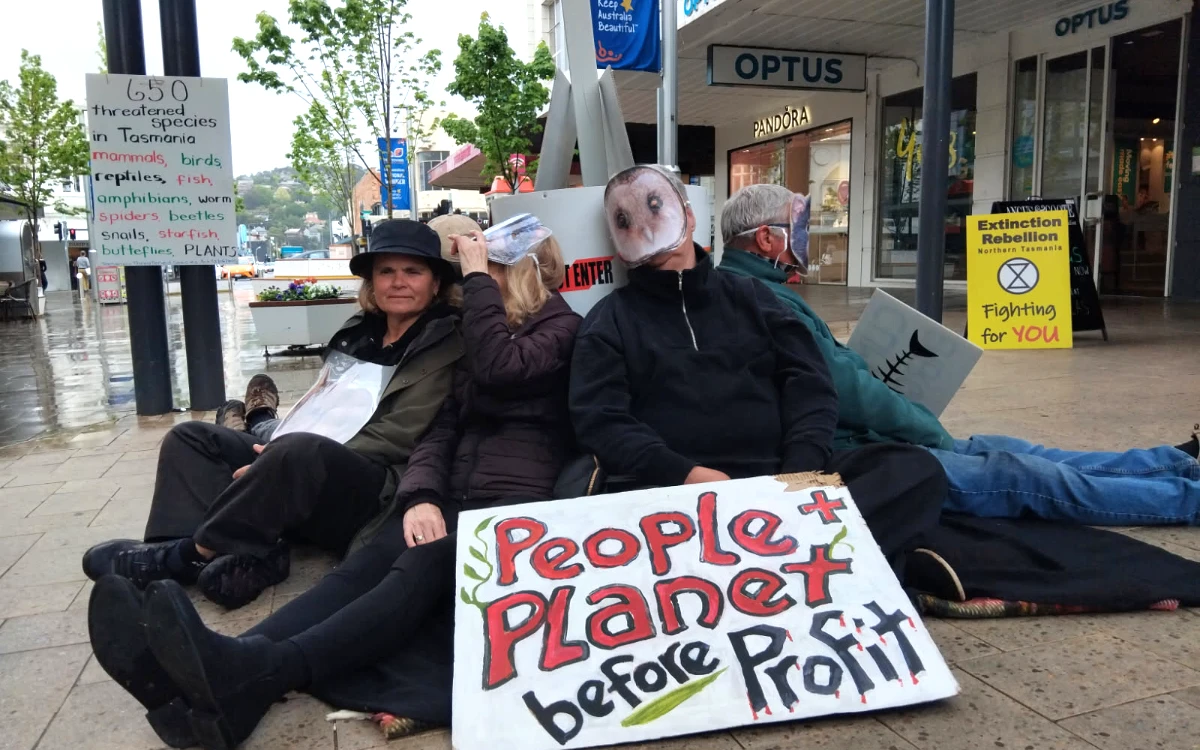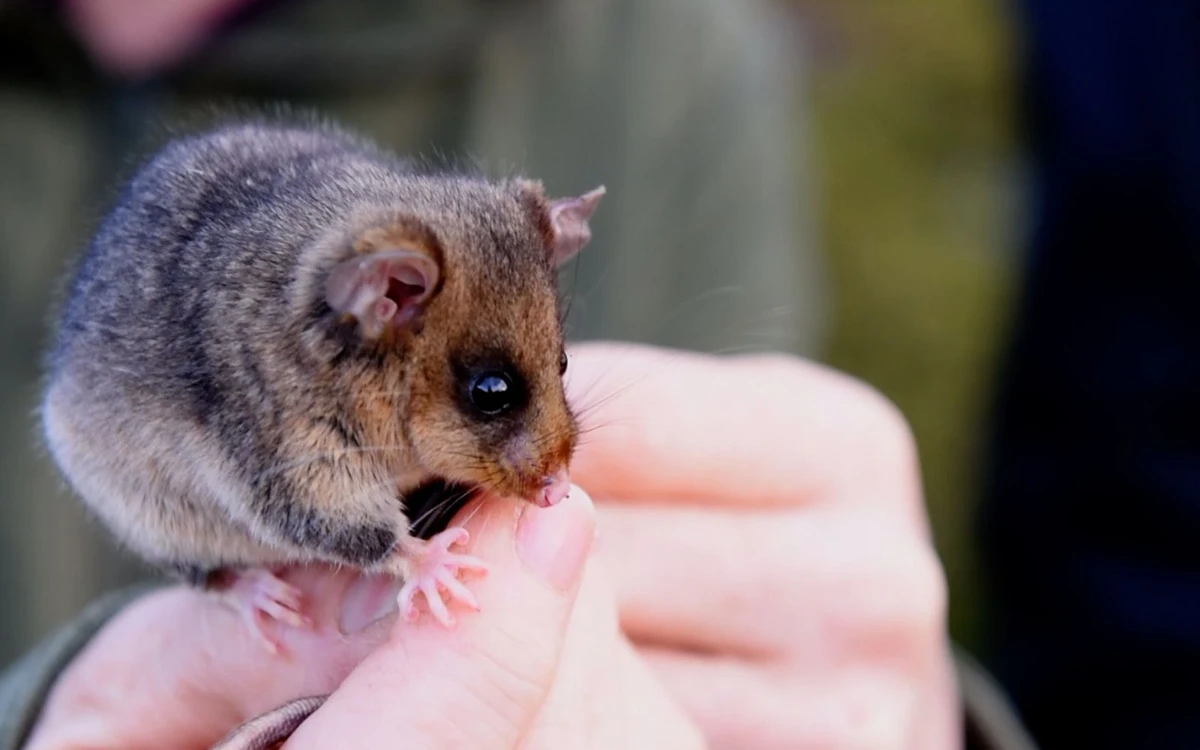
XR Tas rebels stand up for threatened species
Extinction Rebellion Australia, 13 Nov 2025
Last weekend's protest in Launceston Mall highlighted Australia’s extinction crisis. Australia has the fastest rate of mammal extinction in the world, and more than 2,000 species are listed as threatened.
XR Tas says “We have waited too long, watching the environment degrade and species go extinct. In its long awaited environment bill, the Labor government caved in to demands of fossil fuel industries.”
In 2023 alone, 144 plants, animals and ecological communities were added the list of endangered species. The list includes some of the country’s most loved native species, including the koala, the Tasmanian devil, the northern hairy-nosed wombat and a range of the type of animals that Australians take for granted: parrots, cockatoos, finches, quolls, gliders, wallabies, frogs, snakes and fish.
Previous mass-extinction events have been caused by phenomena such as asteroid strikes, volcanoes or natural climate shifts, but today’s extinction crisis is being driven by human activities. Land clearing and habitat destruction, the introduction of feral species and the impacts of climate change are all to blame.
The 2021 Australian State of the Environment Report revealed that 7.7 million hectares of threatened species habitat - an area larger than the size of Tasmania – as destroyed across the continent between 2000 and 2017, and 93% of this was destroyed without government assessment or approval.

More and more species stand on the edge of oblivion. Many more are in trouble, especially in the oceans. The giant Kelp forests that used to flourish along the Tasmanian east coast have now all but disappeared. Growing up to 40 metres from the ocean floor, the forests protected a vibrant ecosystem of sponge garden, fur seals, crayfish, weedy sea dragons and countless fish species.
The sea along the Tasmanian east coast is now a global heating hotspot. Temperatures there have risen at nearly four times the global average.They are about 2C hotter than a little over a century ago. Warm water pushed down the coast by the east Australian current has stripped the area of nutrients, brought new marine species, and killed more than 95% of the giant kelp. The impact on local ecosystems and fisheries has been severe.
Ocean temperatures vary less than those on land and aquatic species are not adept at adjusting to rapid shifts. In Tasmania, this has been exacerbated by extreme marine heatwaves in three of the past five years. Scientists have linked the heatwaves to rising greenhouse gas emissions.

The warmer water also brought new species like the long-spined sea urchin. Scientists found a nearly 50% increase in urchin numbers in Tasmanian rocky reef habitat over the 15 years to 2016, equivalent to 200,000 additional urchins along the coast each year. The urchins, have stripped the ocean floor , leaving it bare. View The Guardian interactive article:The dead sea: Tasmania's underwater forests disappearing in our lifetime
The crisis creates a global threat; what is described as the world’s sixth mass extinction, and the first driven by humans. But part of it is specifically Australian and avoidable.
In 2022, Australia signed the Kunming-Montreal Global Biodiversity Framework. It joined 196 countries pledging a commitment to zero new extinctions. That pledge of zero extinctions is destined to fail without a shift in thinking at the top of government and across the community.
An April 2025 article in The Guardian, Australia is in an extinction crisis, why isn't it an issue at this election, notes that the failure to directly address entrenched issues in environmental protection isn't new.

The singer and activist Peter Garrett served as Labor environment minister between 2007 and 2010, giving him first-hand experience of how nature is considered in government decision-making.
He says says that nature protection was rarely seen as a first-order issue by leaders in government and bureaucracy.
Garrett says the path ahead for people who want change needs to be “building community and organisational strengths”, and supporting activists prepared to put themselves on the frontline using nonviolent direct action against fossil fuel exploitation and environment destruction.